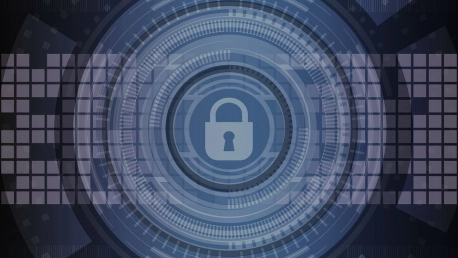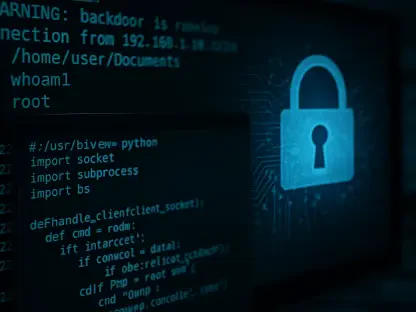Slowly, but firmly, digital security replaces cyber-security. Some may experience surprise or confusion. More articles, more companies’ resources and presentations use the new term instead of the traditional one. What is going on?
How does digital security differ from cyber-security? Most importantly, what new elements does it bring? We will try to explore this together with our readers in the following post.
The obvious differences
As we mentioned above, noticing how “digital” replaced “cyber” is a way of stating the obvious. But what subtle background shift does this illustrate?
Cyber is an abbreviation of cybernetics that dates back to the 1980s. Considering how the technology looked then, in comparison to the way it looks now, it is clear we have gone a long way. Origin-wise, cyber stands for “computer” or “computer network”. The users have continually extended its meaning to cover new technologies of a similar type.
Digital, on the other hand, sprouted out of digital technology and its usage. The more evolved relative of analog technology, digital involves satellite and fiber optic transmissions. As we know, new technologies pushed analog out and brought the increase of digital. The term continuously widened its meaning to include new technologies. Currently, digital is intertwined with IoT. All related hardware and software, as well as their backstage mechanisms count as digital. From gadgets to modern computers to networks and communications – a whole new range of operations stands under the sign of digital.
Etymologically, digital comes from “digits”, usually representing binary data. Still present in all tech-related activities, at least until the raise of quantum computing, binary defines present day computing.
Why the shift to digital security?
During the confrontations with various cyber-attackers, cyber-security adapted and upgraded. Think of it as a game – gradually both adversaries advanced to higher levels. The more or less silent fight got more sophisticated or showed incredibly silly weaknesses.
Nevertheless, once artificial intelligence integration proved viable, specialists crossed a point of no return. Continuous monitoring, huge amounts of data and machine learning just turned the most advanced cyber defense techniques digital-dependent. No older technology could stand big data and the algorithms that turn it into understandable results. The next step? Intelligent machines that predict when and how the attackers plan to strike. Anticipative digital security, that is. Or, if you like, predictive modeling. Smart software employs data mining to predict outcomes. Security outcomes.
Once this desideratum is fully adopted and transformed in commercially available services and defensive software, it will be clear why all related security needs a new name, marking an epic shift.
What is digital security?
To calm down the most panic-prone, digital security is all that cyber-security used to be, integrated and coordinated. It includes cyber-security awareness, implemented coherent strategies and a stand-by stance for all there is to come.
In addition, digital security means an efficient assessment of all connected endpoints, from computers to mobile phones. The way data travels to and from these machines, and the way it ends up in various network points and in the cloud needs to be known, in order to allow real data protection.
When the amount of data is too high for human factors to monitor it and to coordinate all appropriate measures, automated tools come in. In concordance with each organization’s needs, these digital tools allow security measures to fluently remain active. No risk points, no errors, no unauthorized actions or hidden traffic. Or at least this is what digital security aims for.
Examples of “how to” in digital security
All of the above might make more sense when consulting a few case studies.
Here is how education institutions can achieve digital security. It’s all about securing digital devices, securing and backing up data.
Cyber-security companies offer dedicated software and products, in the attempt to restore clients’ peace of mind when navigating their way through the modern tech environment. Although quite cryptic, Gemalto’s approach of the subject may give you an idea of their goals.
A different source of related materials comes from privacy protection activists. Whether they come from NGOs or not, they seem to need a proper and thorough digital protection. Therefore they came up with instructional materials on how to achieve a high digital protection status when being connected. See here a more conventional material, or check this fun infographic-like approach.
Digital security is just a few steps away
Once they have surpassed their fear of the unknown and understood that big words can be conquered with small, yet firm steps, those interested may start planning their digital security strategies.
There is no escaping from things that should have been done under the framework of traditional cyber-security, Training, planning, implementing – if you have fallen behind on these, it’s high time to catch up with them. A correct assessment of all connected systems is also necessary. We have said it before, but just as some people keep ignoring the basic steps, we keep on mentioning them.
Once all current operations are covered, security-wise, it is time to think of the future. Just how prepared is your IT environment for new additions? What would happen in case of an attack? Which are the major risks? How about the overlooked ones? Where should you invest more?
Here’s a brief thematic summary based on the digital security state in German companies. It might sound as a different mindset altogether. Precaution, avoidance of unnecessary exposure, investment adjustments. Some might say allotting more money is where that the hard part begins. However, even in an informative way, it wouldn’t hurt to take a look.









